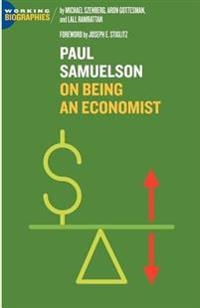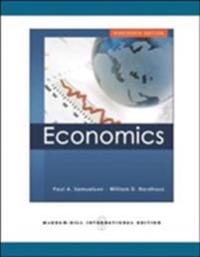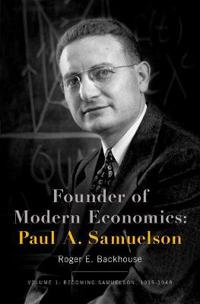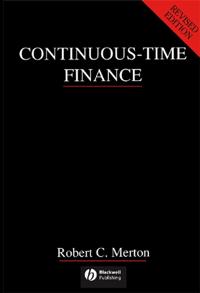Collected Scientific Papers of Paul Samuelson, The: Volume 6 (Övrig)
avPaul A. Samuelson
ISBN: 9780262015400 - UTGIVEN: 2011-02-11"It is a measure of Professor Samuelson's preeminence that the sheer scale of his work should be so much taken for granted," a reviewer for the Economist once observed, marking both Paul Samuelson's influence and his astonishing prolificacy. These two volumes gather the Nobel Laureate's final writin[...]
Collected Scientific Papers of Paul Samuelson, The: Volume 7 (Övrig)
avPaul A. Samuelson
ISBN: 9780262015745 - UTGIVEN: 2011-02-11"It is a measure of Professor Samuelson's preeminence that the sheer scale of his work should be so much taken for granted," a reviewer for the Economist once observed, marking both Paul Samuelson's influence and his astonishing prolificacy. These two volumes gather the Nobel Laureate's final writin[...]
Collected Scientific Papers of Paul Samuelson, The: v. 3 (Inbunden)
avPaul A. Samuelson
ISBN: 9780262190800 - UTGIVEN: 1972-01-01The Theory Of Value And Distribution In Economics (Inbunden)
avPierangelo Garegnani, Paul Samuelson
ISBN: 9780415519595 - UTGIVEN: 2012-07-19Macroeconomics (Pocket)
avPaul A. Samuelson, William D. Nordhaus
ISBN: 9780070164949 - UTGIVEN: 2009-05-01Economics (Häftad)
avPaul A. Samuelson, William D. Nordhaus
ISBN: 9780071263832 - UTGIVEN: 200907Samuelson's text was first published in 1948, and it immediately became the authority for the principles of economics courses. The book continues to be the standard-bearer for principles courses, and this revision continues to be a clear, accurate, and interesting introduction to modern economics pr[...]
Microeconomics (Pocket)
avPaul A. Samuelson, William D. Nordhaus
ISBN: 9780071312035 - UTGIVEN: 2009-05-01Economics (Inbunden)
avPaul A. Samuelson, William D. Nordhaus
ISBN: 9780073511290 - UTGIVEN: 2009-05-01Offers an introduction to the principles of economics courses.
Founder of Modern Economics, Paul A. Samuelson
ISBN: 9780190664091 - UTGIVEN: 2017-05Paul Samuelson was at the heart of a revolution in economics. He was "the foremost academic economist of the 20th century," according to the New York Times, and the first American to win the Nobel Prize in Economics. His work transformed the field of economics and helped give it the theoretical and[...]
The Price of Prosperity: A Realistic Appraisal of the Future of Our Nationa (Häftad)
avPeter L. Bernstein, Foreword by:Paul A. Samuelson
ISBN: 9780470287576 - UTGIVEN: 2008-09-30Continuous-Time Finance (Häftad)
avRobert C. Merton, Merton, Paul Anthony Samuelson
ISBN: 9780631185086 - UTGIVEN: 199211Robert C. Merton's widely-used text provides an overview and synthesis of finance theory from the perspective of continuous-time analysis. It covers individual financial choice, corporate finance, financial intermediation, capital markets, and selected topics on the interface between private and pub[...]
Inside the Economist's Mind: Conversations withEminent Economists (Inbunden)
avEditor:Paul A. Samuelson, Editor:William A. Barnett
ISBN: 9781405157155 - UTGIVEN: 2006-11-30Inside the Economist's Mind: Conversations with Eminent Economists (Häftad)
avEditor:Paul A. Samuelson, Editor:William A. Barnett
ISBN: 9781405159173 - UTGIVEN: 2007-01-31














